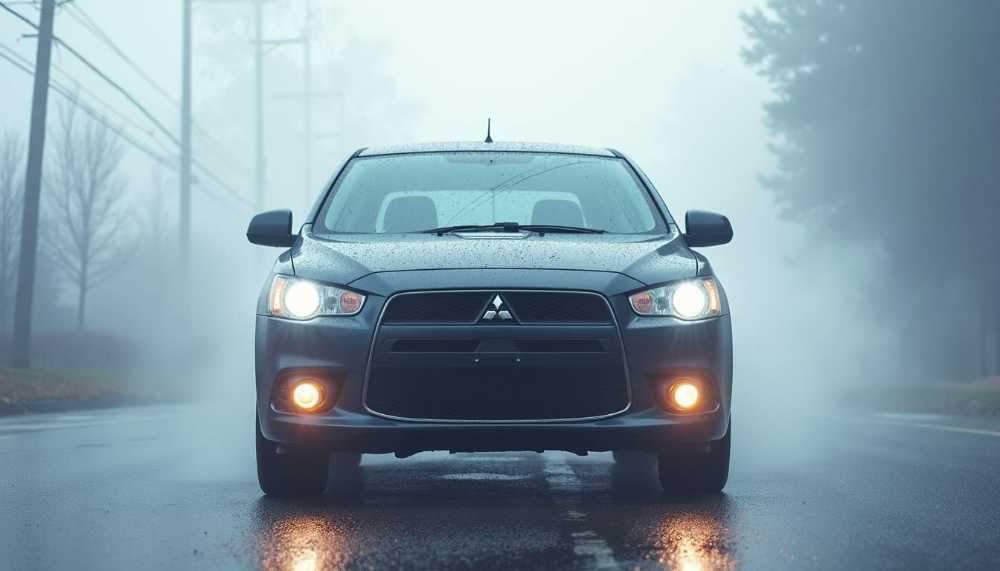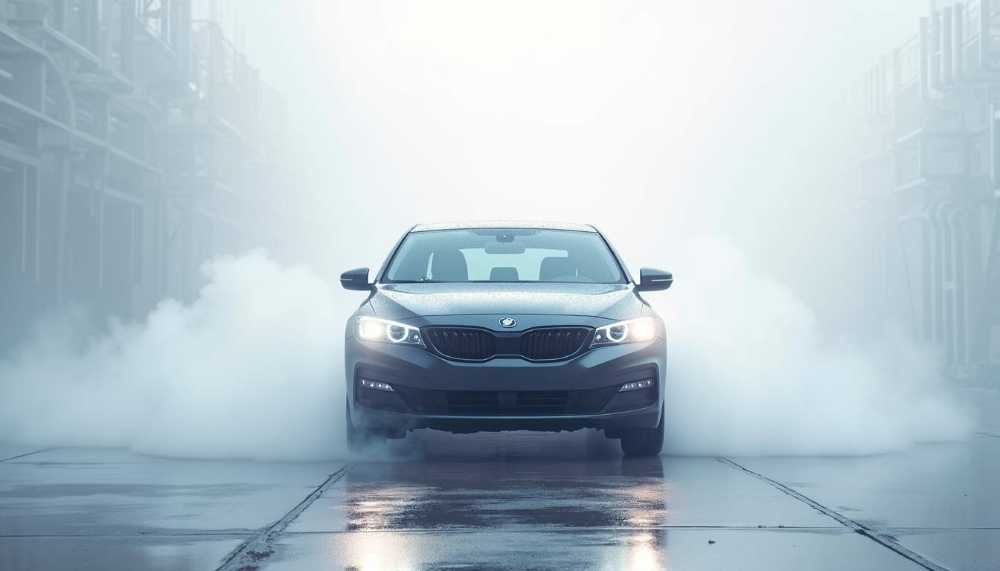Fog lights are an essential addition to any vehicle, especially for those who frequently drive in challenging weather conditions. This guide will walk you through the significance of fog lights, the necessary tools for installation, the step-by-step process, and maintenance tips to keep your fog lights in optimal working condition.
Understanding the Importance of Fog Lights
Fog lights are designed to illuminate the road directly in front of your vehicle, providing better visibility during fog, rain, or snowy conditions. Unlike standard headlights, fog lights cast a wide, low beam of light that reduces the amount of light that reflects off the fog or rain. This unique design helps drivers see through the dense moisture in the air, which can often obscure visibility and create hazardous driving conditions.
The Role of Fog Lights in Road Safety
The primary role of fog lights is to enhance safety by improving your visibility when the weather is poor. They allow you to see the road ahead more clearly, helping you avoid obstacles and navigate turns safely. By illuminating the road close to your vehicle, fog lights minimize glare and create a safer driving experience. This is particularly crucial during nighttime driving in adverse weather, where the combination of darkness and precipitation can lead to dangerous situations.
Additionally, fog lights make your vehicle more noticeable to other drivers, enhancing overall road safety. If vehicles are equipped with fog lights, they are easier to spot by other drivers, thus reducing the chances of accidents. The presence of fog lights can act as a signal to other motorists that visibility is compromised, prompting them to exercise greater caution. Moreover, in rural areas or on poorly lit roads, fog lights can be a lifesaver, illuminating potential hazards such as wildlife or debris that may not be visible with standard headlights alone.
Key Features to Consider When Choosing Fog Lights
When selecting fog lights for your vehicle, consider the following key features:
- Brightness: Look for fog lights that provide sufficient brightness without causing glare for oncoming traffic.
- Beam Pattern: A good beam pattern directs light low and wide to illuminate the road without reflecting significantly off the fog.
- Durability: Fog lights should withstand harsh weather conditions; choose lights that are water-resistant and have a sturdy housing.
- Color Temperature: Lights with a color temperature around 3000K to 4000K are effective for foggy conditions.
In addition to these features, consider the installation process and compatibility with your vehicle. Some fog lights are designed for easy plug-and-play installation, while others may require more complex wiring or modifications. It's also worth noting that different vehicles may have specific mounting points or requirements, so consulting your vehicle's manual or a professional can ensure a proper fit. Furthermore, modern fog lights come in various styles, including LED and halogen options, each offering distinct advantages in terms of energy efficiency and brightness, allowing you to choose the best fit for your driving needs.
Gathering Your Tools and Materials
Before you begin the installation process, ensure you have all the necessary tools and materials ready. Proper preparation can save you time and make the installation more efficient.
Essential Tools for Fog Light Installation
To install fog lights, you will typically need the following tools:
- Wire strippers and connectors
- Socket wrench set
- Drill and drill bits
- Tape measure
- Screwdrivers (flat and Phillips)
- Electrical tape
- Zip ties
Having these tools at your disposal will ensure a smooth installation process, preventing delays caused by searching for equipment midway through the task. Additionally, consider having a flashlight handy to illuminate hard-to-reach areas, especially if you're working in a dimly lit garage or during the evening. A magnetic tray can also be beneficial for keeping small screws and nuts organized, so they don't get lost during the installation.
Choosing the Right Fog Lights for Your Vehicle
Choosing the right fog lights is crucial for proper installation and functionality. Check your vehicle's specifications to determine the optimal fog light size and type. It's advisable to select fog lights that match the style of your vehicle for aesthetic consistency. You can find fog lights in various configurations, including halogen, LED, and HID options.
Researching various brands and reading reviews can also help you find highly-rated fog lights that provide good visibility and durability. Look for fog lights that come with a warranty, as this can be an indicator of quality and reliability. Furthermore, consider the beam pattern of the fog lights; a wide and low beam is typically more effective for cutting through fog, rain, or snow, enhancing your visibility and safety on the road. Some models even offer adjustable settings to customize the light output based on your driving conditions, making them a versatile choice for various weather scenarios.
Step-by-Step Guide to Fog Light Installation
Now that you have your tools and fog lights ready, it's time to install them. Follow these steps to ensure a successful installation.
Preparing Your Vehicle for Installation
Begin by preparing your vehicle. Park your car on a flat surface and turn off the ignition. It's essential to disconnect the battery to avoid any electrical issues during the installation process.
Next, locate the area where you will mount the fog lights. Depending on the vehicle's make and model, this may involve removing the front bumper or using existing mounting brackets. It’s a good idea to consult your vehicle's manual for specific instructions related to your model, as some vehicles may have unique configurations that require special attention. Additionally, gathering all necessary tools beforehand will streamline the process and help you avoid interruptions.
Wiring the Fog Lights
Once the mounting area is prepared, it’s time to wire the fog lights. Start by connecting the wiring harness to the fog lights according to the manufacturer’s specifications. Typically, this involves connecting positive and negative terminals.
Route the wiring through the vehicle’s frame to reach the toggle switch inside the vehicle for easy access. Use zip ties to secure the wiring and ensure it doesn’t get pinched or damaged during driving. It’s also advisable to use electrical tape to wrap any exposed wires, providing an additional layer of protection against moisture and corrosion. If your fog lights come with a relay, make sure to install it in a location that is easily accessible for future maintenance.
Mounting the Fog Lights
With the wiring in place, you can now mount the fog lights. If you are using brackets, secure the lights to the brackets using screws. Make sure the lights are positioned at the correct height and angle to maximize visibility without blinding other drivers.
Finally, reinstall the front bumper if it was removed, double-checking that all screws and clips are secured properly. Before you finish up, take a moment to test the fog lights to ensure they are functioning correctly. This can save you time and frustration later on, as you can make any necessary adjustments while everything is still accessible. Additionally, consider taking your vehicle for a short drive in low visibility conditions to see how well the fog lights illuminate the road, allowing you to fine-tune their positioning if needed.
Testing Your Fog Lights
After installation, it’s crucial to test the fog lights to ensure they are functioning correctly. This step verifies that you have wired everything properly and that the lights are properly aligned.
Ensuring Proper Functionality
Reconnect the vehicle’s battery, start the engine, and turn on the fog lights. Observe whether both lights illuminate. In some cases, you may need to adjust or replace fuses if the lights do not turn on.
It’s also essential to ensure that the lights are correctly positioned. Stand in front of the vehicle to see if the light beam is directed low and wide, illuminating the road without producing an excessive glare.
Adjusting Fog Lights for Optimal Visibility
If the fog lights are too high or too low, they can be adjusted easily. Most fog lights have mounting screws or adjustable brackets to allow for fine-tuning. Use this feature to ensure that your fog lights provide the best possible visibility without disrupting other drivers.
Maintenance Tips for Fog Lights
Maintaining your fog lights is essential to ensure they function optimally over time. Regular care can prevent issues and prolong the lifespan of your lights.
Regular Cleaning and Inspection
Fog lights should be cleaned regularly to remove dirt and debris that can obstruct the beam. Use a microfiber cloth and appropriate cleaner to maintain clarity. Inspect the lenses for cracks or moisture buildup that could impair performance.
Additionally, check the wiring periodically to ensure there are no frays or damage, which could lead to malfunctioning lights.
Troubleshooting Common Fog Light Issues
If you experience issues with your fog lights, such as flickering or not turning on, troubleshooting is essential. Check the bulb to ensure it isn't blown and verify that all connections are secure. If problems persist, consult a professional or refer to your vehicle’s manual for further guidance.
By following these steps, you can ensure your fog lights contribute to safer driving conditions, providing you with the visibility you need during inclement weather.














